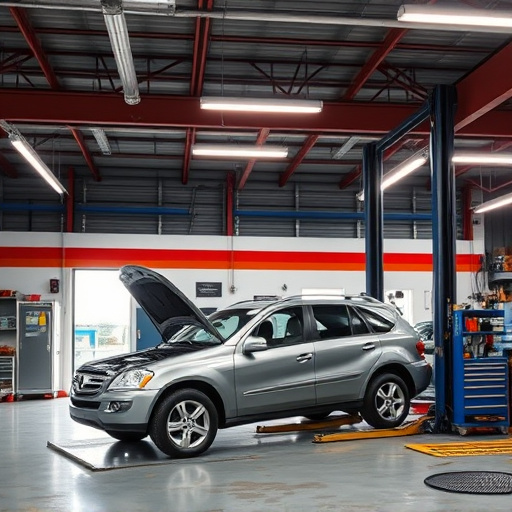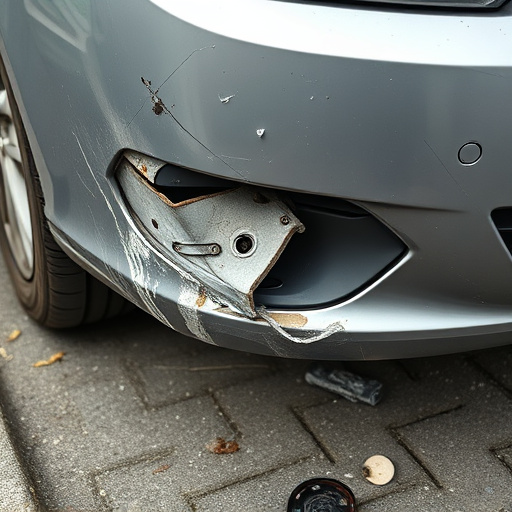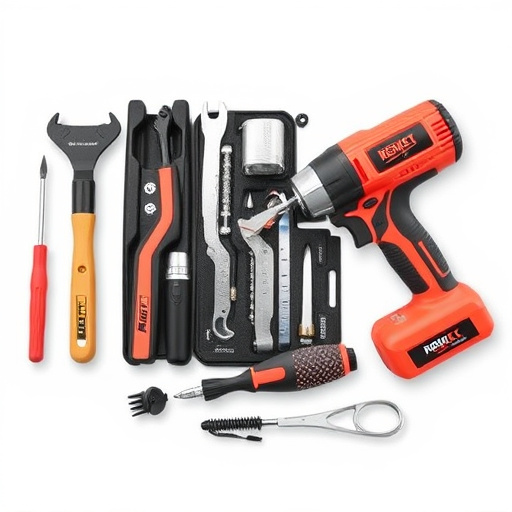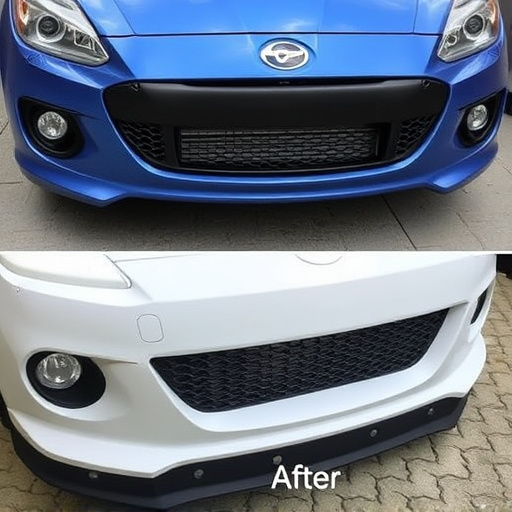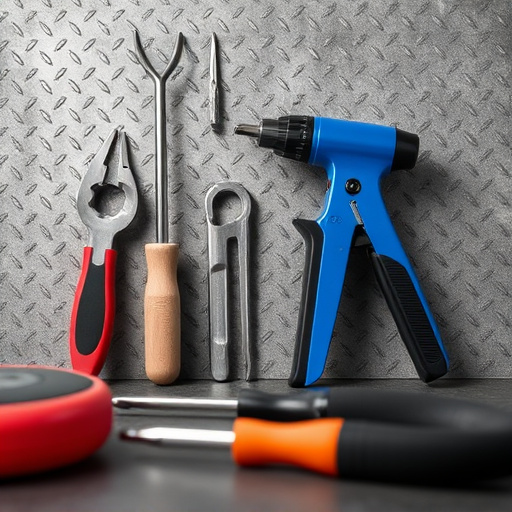Door dent repair is a detailed process aimed at restoring minor damage to vehicle doors, focusing on preventing further paint or structural issues. It involves assessing dent severity, choosing appropriate methods like plastic welding, and expertly reshaping/painting damaged areas while preserving the door's structure and surrounding surfaces. Techniques include using tools like pneumatic dent pullers, heat guns, and "plastic deformation" methods for precise metal manipulation, ensuring seamless alignment with the vehicle body. Finally, repainting matches the original color best achieved with professional help.
Door dents can be a common car owner’s nightmare, but with the right approach, repairing them without damaging the paint finish is entirely feasible. This article guides you through the process of understanding and mastering door dent repair. We’ll explore essential tools and safe techniques, ensuring your vehicle’s appearance remains intact. Learn a step-by-step method to fix dents effectively, avoiding costly body shop repairs. Discover how to tackle this task with confidence, using simple methods that every car enthusiast should know.
- Understanding Door Dent Repair: The Basics
- Tools and Techniques for Safe dent removal
- Step-by-step Guide to Door Dent Repair
Understanding Door Dent Repair: The Basics

Door dent repair is a process that addresses minor imperfections on vehicle doors, particularly dents and dings. It’s crucial to approach this task with care to avoid further car damage repair or marring the delicate car paint finish. The basics involve assessing the extent of the dent, choosing an appropriate repair method, and employing techniques like painting over or reshaping the damaged area without damaging the surrounding surface.
Understanding the door’s structure is key, as it includes not just the outer panel but also the underlying frame. In some cases, a simple frame straightening technique might suffice to bring the door back to its original shape. However, for deeper dents, professional methods such as plastic welding or more advanced car repair services might be necessary to ensure a flawless finish that matches the vehicle’s overall aesthetic.
Tools and Techniques for Safe dent removal
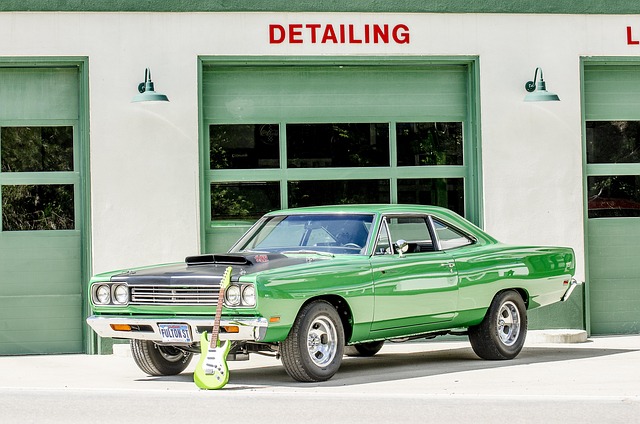
When it comes to door dent repair, the goal is not only to restore the car’s appearance but also to avoid damaging the paint finish. The right tools and techniques are essential for this delicate process. One popular method involves using a pneumatic dent puller, which gently applies suction to lift the dented area back into place. This tool is preferred over hammering or using sharp objects, as it minimizes the risk of scratching or breaking the paint surface.
Additionally, professionals often employ a technique known as “plastic deformation,” where specialized tools are used to reshape the metal without cutting or drilling. This approach allows for precise adjustments and ensures that the door aligns perfectly with the vehicle’s body lines. By combining these methods, automotive collision repair experts can effectively fix door dents while maintaining the integrity of the vehicle body shop’s work and preserving the overall aesthetic of the vehicle body repair process.
Step-by-step Guide to Door Dent Repair

Door dent repair is a process that requires precision and care to avoid damaging the car’s paint finish. Here’s a step-by-step guide to help you achieve this:
1. Assess the Damage: Begin by thoroughly inspecting the door for the extent of the dent. Use a flashlight or magnifying glass if needed to spot any hidden damage. This step is crucial as it determines the repair method suitable for your situation.
2. Prepare the Surface: If there’s visible debris trapped in the dent, use a soft-bristled brush and dental pick to carefully remove it without causing further damage. Next, clean the area with a mild detergent and water to ensure no dirt or grime remains. Drying the surface is essential before proceeding to the next steps.
3. Apply Heat: Using a heat gun set at a low temperature, gently apply heat to the dented area. This helps expand the metal, making it easier to return to its original shape. Always be cautious with heat to avoid scorching the paint or surrounding surfaces.
4. Use a Dent Puller: Once the metal is warmed, use a dent puller tool to slowly and carefully extract the dent. Apply even pressure to ensure a smooth, uniform result. This step might require some force, so exercise caution to prevent damage to the panel.
5. Smoothen and Prime: After successfully pulling out the dent, use sandpaper to smoothen any jagged edges left behind. Ensure the area is free from debris and dust. Apply an automotive primer designed for painting to prepare the surface for the final repair and ensure long-lasting results.
6. Paint and Auto Detailing: Finally, with a professional car paint service or auto detailing kit, repaint the corrected area to match your vehicle’s original color precisely. This step requires skill and patience, so consider seeking expert help if you’re not confident in your abilities.
Door dent repair is a skill that can save you time, money, and the hassle of dealing with unsightly car dents. By understanding the basics, choosing the right tools, and following a step-by-step guide, you can safely remove door dents without damaging the paint finish. Remember, proper techniques and careful navigation are key to achieving a flawless repair that leaves your vehicle looking like new.



